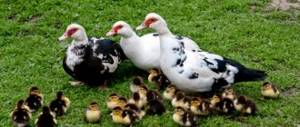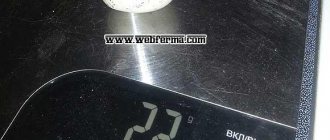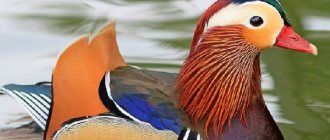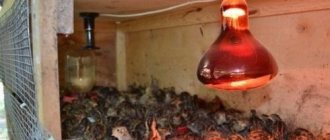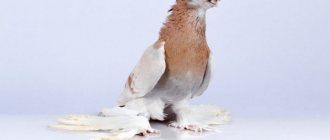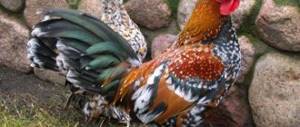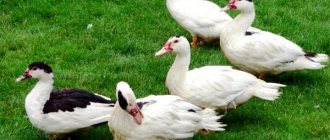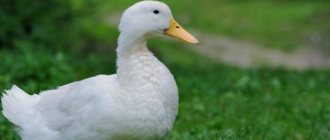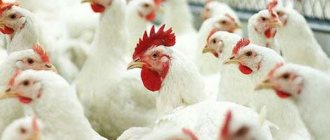Tuxedo quail were developed by breeders by crossing English birds with black and white plumage. English white quails have meat productivity. A bird with black plumage exhibits good egg production.
The tuxedo quail is a universal meat-egg breed. Livestock are bred not only for meat and eggs, but also for aesthetics. They attract attention with their unique plumage color. What are the characteristics of the breed? How to care for quails?
Appearance and performance
The back, wings, and tail of tuxedo quails are dark, and the chest, abdomen and front of the neck are covered with light feathers. This gives the bird a strict and original appearance, due to which it is also bred for decorative purposes. Hens and cockerels are colored the same, so the sex of the young is determined by the presence of a cloacal gland in males.
The productive characteristics of tuxedo quails are such that in terms of egg production, these birds are only slightly inferior to “Estonian” and “Japanese”. Annual productivity is up to 270 pcs. annually, and the weight of the egg is from 10 to 11 g. In the presence of a male, up to 90% of the production is fertilized.
The weight of a cockerel that has reached ideal productive conditions is from 180 to 210 g, and that of a laying hen is from 200 to 220 g.
Advantages and disadvantages
Before you start breeding Texas quail, it is recommended that you familiarize yourself with their characteristics in advance in order to take into account all the pros and cons of purchasing these birds.
Strengths
Let's start with the positive qualities of the breed:
- When preparing a competent diet, Texas quail will give a large increase.
Intensive weight gain is observed in chicks from a very early age and does not keep you waiting - a two-month-old quail looks like an adult bird; Texas quails are superior in weight to most other breeds - Representatives of the breed do not require special maintenance conditions, which would require poultry farmers a lot of effort and time to provide;
- Laying hens quite rarely experience problems with the oviduct (for example, its prolapse, which puts an end to the further use of quail for obtaining eggs);
Texas quail eggs sometimes vary significantly in size - Meat obtained from Texas quail is a high-quality dietary product. It is very convenient to obtain when slaughtering quails due to the fact that the meat is effortlessly separated from the feathers;
- Poultry farmers note the excellent presentation of quail meat obtained after processing.
Weak sides
Unsatisfactory egg production;
- Problems with fertilization and hatchability of eggs. Even with the help of special incubators, sometimes it is not possible to save half the chickens;
- The unpretentiousness of Texas quail does not interfere with their excellent appetite.
Therefore, food costs for representatives of this breed may be higher than for other quails. A hundred quail consume about five kilograms of feed per day; Texas broiler quail consume a lot of food, due to which they quickly gain weight - Sexual dimorphism has bypassed this breed, so it will be possible to distinguish a female from a male only after the quail begins to lay eggs;
- Due to the peculiarities of their “temperament”, males show passivity during crossing;
- Newborn quails need careful care and constant monitoring of their well-being, since they are very weak. Some chicks die even with completely proper care.
Chickens of this breed are born weak and require care from a poultry farmer.
This breed has important advantages:
- Weight gain occurs quickly and effectively.
- The chicks have good meat growth characteristics.
- The meat has a pleasant dietary taste.
- Problems occur extremely rarely during the egg laying process.
- The breed has very few requirements for breeding conditions.
- The cost of cultivation is much less than in similar cases.
- After processing is completed, the meat has a good presentation.
- Cleaning of feathers occurs with little effort.
Along with the positive aspects, birds of this breed also have certain disadvantages:
- The level of egg production can be described as average or lower.
- Fertility and hatchability parameters are low. Typically they are around 60%.
- The differences between males and females are so slight that it is very difficult to distinguish them visually. In most cases, the female is identified after she lays eggs.
- Male activity is low.
- Newly hatched chicks have poor health.
Conditions of detention
Description of the tuxedo quail breed in terms of living conditions will be typical for all domestic quails. Like other representatives of this species, black and white birds love warmth. A comfortable temperature for them is from +20 to +25 oC. If it gets colder, the birds will start to get sick and stop producing eggs. They also do not tolerate heat well.
Tuxedo quails can be kept on the floor, in an aviary, but it is better in cages stacked on top of each other in 3-4 floors. This will allow you to place more individuals on each unit of area, and will also make it easier to care for the livestock.
To keep one feathered family, consisting of 1 cockerel and 4 females, a cage measuring 0.3x0.3 m and a height of 0.25-0.3 m is enough. Feeders and drinking bowls are traditionally installed inside, but if they are attached outside , birds will not rake and throw away food, or clog drinking water containers.
Content
Currently, more and more people are trying to lead a healthy lifestyle and eat the right natural products. The demand for quail eggs and meat is growing every year. Perhaps for some, quail breeding will become a profitable business, while others will begin to breed quail for themselves. Getting started does not require large financial investments, and results can be obtained fairly quickly.
Tuxedo quail are for those breeders who are interested not only in high meat and egg production, but also in the appearance of the birds.
Tuxedo quail, like other breeds, are kept in cages. The room where the cages will be located must be warm, heated in winter, well lit and ventilated, but without drafts.
At this age, tuxedo quails better tolerate moving and adaptation to a new place. It is better to start a quail family: 4 females and 1 male. They need a cage measuring 30x30 cm and no more than 25 cm high.
A more spacious cage will negatively affect the egg production of tuxedo quails. Do not build nests; the birds will fly straight to the floor. Lay straw, sawdust, shavings or newspaper on the floor of the cage.
Clean cages regularly. The main thing is that they are not damp and do not smell of bird droppings, especially if you intend to keep quails in a city apartment.
Tuxedo quails love to take sand baths; place a container of sand inside the cage about once a week. The bathing procedure helps birds get rid of parasites.
If the birds have stopped laying eggs, then perhaps there is low humidity in the room. You can place containers of water near the cages, but do not overdo it. High humidity does not have the best effect on tuxedo quails.
Light Requirements: Tuxedo quail need 17 hours of daylight. If there are windows in the poultry house, summer and spring daylight is sufficient, but in winter additional lighting will be required. If the lighting is too bright, birds become aggressive and can harm each other. How to equip a quail cage, watch the video:
Where to place the cells
Quails are shy, and representatives of the tuxedo breed are no exception in this sense. Sharp sounds, constant noise, excessive attention from people, as well as visits from small predators are stressful for them and cause a decrease in egg production. Frightened birds eat poorly and lose weight. To prevent this from happening, the cages are placed in a room where the birds will be quiet and calm.
The room must certainly be ventilated, but without drafts. In winter, additional heating will be required. When turning on electric heaters, it is important not to forget about maintaining optimal humidity, ranging from 50 to 70%. To do this, bowls with water are placed near the cages, and wet cleaning of the room is carried out at least once a day.
As for lighting, it cannot be bright, since the habitat of quails in natural conditions is tall grass. That is why the cages are placed away from the light source and so that the direct rays of the sun do not fall on the birds. If the room is too light, the quail will become restless, aggressive, and pecking will begin, which can lead to mass death of the livestock.
The recommended length of daylight hours is about 17 hours, both in winter and summer. Wanting to achieve record egg production, some poultry farmers use round-the-clock lighting. However, laying hens that “work” at the limit of their physiological capabilities for a long time consume more feed, and their body wears out more quickly.
Raising young animals
Tuxedo quails have completely lost their brooding instinct. To obtain young quails, use incubators.
After hatching, tuxedo quail chicks can be kept in ordinary boxes, ensuring a comfortable temperature of +35 degrees. After two weeks, gradually reduce the temperature to room temperature. A regular lamp will help regulate the temperature in the box.
Tuxedo quail chicks are light brown with stripes on the back. After hatching in the next 4 hours, the chicks become very active and mobile, so cover the box with a net, as they are quite capable of reaching such a height.
Tuxedo quails grow very quickly. At first, they need to be fed a boiled egg, to which mixed feed and yogurt are added. After a week, you can add cottage cheese, chopped herbs, grated carrots, fish oil, and by the end of the month the chicks are already fed like an adult bird. Chicks must have food and clean water. Do not use deep drinking bowls; quails may die in the water. Nylon lids for jars are quite suitable for drinking bowls.
Important! There should be enough feed at first. Keep an eye on their freshness, as high temperatures cause food to quickly deteriorate.
In the first week of life, quails should eat 5 times a day, then 4, and by the end of the month 3 times. By the second week of life, introduce shells, chalk, and small gravel to the diet of tuxedo quail chicks. But until the end of the month, the diet should include cottage cheese and fish. Add crushed grain gradually.
Feeding
In tuxedo quails, like other representatives of this family, metabolic processes occur quickly. That is why they require food that fully meets the body’s needs for protein, vitamins, minerals and other vital elements, as well as providing weight gain and supporting egg production. It’s easier to use ready-made factory-made formulations, because at home creating a complete diet using the entire set of necessary components is not an easy task.
Each tuxedo quail consumes 25 g of food per day. This is not much when compared with the voracious representatives of the Texas breed, which require 35 g. Black and white birds cannot be overfed, as this threatens obesity, sexual inertia in males and a decline in egg production in females. Feeders are filled twice a day.
To ensure that the birds have a varied diet, in addition to grain, they are fed:
- fresh, chopped greens;
- chopped pumpkin, carrots and beets;
- cucumbers and cabbage leaves;
- nettle and dandelion grass;
- sour milk derivatives;
- other products.
At the same time, the poultry farmer should ensure that there is always fresh drink in the drinking bowls. If there is no nipple drinking system, the water is changed at least 2 times a day.
Optimal conditions
Poultry house: temperature and humidity
For tuxedo quails, you need to maintain room temperature: from 18 to 22 degrees. Ventilation is required, but without drafts.
Birds should not be exposed to direct ultraviolet rays. Due to excess daylight, quails rush at their relatives. Read more in the article “Why do quails peck at each other.”
There should be 17 hours of daylight, so in winter, turn on lamps for them. Otherwise, the quail will overeat and lay eggs more often, which can lead to rapid wear and tear on the body.
The humidity in the poultry house must be maintained at 50-70%. Keep an open container of water there and wipe the floor frequently with a damp cloth.
We take proper care
The cages need to be cleaned every 1-2 days. Once every 3 months, treat them with disinfectants: a solution of soda or manganese.
Birds need weekly sand baths to get rid of parasites. Place a container with sand and ash in the cage, and the quail will “bathe” themselves.
Care
The tuxedo quail, photos of which are presented here and below, will be healthy and maintain the purity of its plumage if the owner regularly cleans the cage where the bird is kept. If daily cleaning is not possible, it should be done 3 times a week, but not less often.
Sanitation of the entire premises is carried out once a month. To prevent ectoparasites, birds are given weekly dust baths. Containers with dry and clean sand are placed in cages so that the quails can clean the fluff and feathers from lice and ticks.
Development of young animals
The weight of a hatched tuxedo quail is 7-8 g. After the chicks hatch, they are kept in the incubator for several more hours to dry, after which they are transferred to a brooder - a kind of nursery for newborns, where it should be very warm. Here they will spend the first weeks of life. The poultry must be sorted. Weak chicks and those with obvious developmental anomalies are very difficult to hatch. In most cases, they die in the first days of life. It is impractical to keep such animals, so many experienced quail breeders get rid of them without hesitation.
Breeding
Puberty of tuxedo quails ends by 6-7 weeks of life. It is from this age that laying hens begin to produce eggs, and males become capable of fertilization. Breeding the breed is complicated by the lack of brooding instinct in hens, which, however, is also typical for some other artificially bred bird hybrids. The problem is easily solved by purchasing an incubator or purchasing ready-made young animals from trusted breeders.
Chicks are born on the 17th day from the start of egg laying. If the incubation regime is strictly observed, in terms of maintaining the correct temperature and importance in the apparatus, the quails come into the world strong and healthy, weighing 7-8 g. After the fluff has dried, the young animals are transferred to an insulated box, where they will remain for the first time. Day-old chicks are sorted, selecting weakened and non-viable ones. The first ones are removed and nursed separately, and the second ones, often having congenital anomalies, are disposed of.
Beginning poultry farmers who are taking up the task of caring for tuxedo quails for the first time should take into account that these babies are small but nimble. They easily crawl under a rag-bedding, where they can suffocate and die if the owner does not come to the rescue in time.
By the behavior of quails you can determine when they are hot or cold. At:
- when hypothermic, they gather in a bunch and squeak, pressing tightly against each other;
- overheated, lie on the floor with their necks stretched out.
To avoid dangerous temperature changes, it is recommended to use a lamp with an infrared lamp. After adjusting the height, the heat source is secured above the box or brooder with chicks, and then turned on.
In the first 10 days, the temperature is maintained within 35-38 °C, and then it is gradually reduced so that by the time the chicks are one month old, the thermometer is at 20-25 °C, as for adult birds.
Description of the bird
In size, the quail is slightly smaller than the city pigeon. Their plumage is unique. The feathers on the back, belly and wings are dark brown. The head is spotted with white patches. The chest is white. Here the feather forms clear boundaries.
A bird that takes a vertical stance looks stern and graceful, as if it were wearing a white shirt and a dark tuxedo. The eyes are brown, the beak is brown, the metatarsals are light brown or pinkish in color. What is the description of the productivity of this breed:
- The quail's body shape is elongated. The neck is short. The head smoothly transitions into the back. The chest is slightly smoothed. The abdomen is wide. Body length 20 cm, tail 4 cm;
- chicks hatch weighing 6-8 g. Moreover, males are larger than females. Subsequently, females begin to develop faster and weigh more than males;
- the body weight of quail reaches 200 g, tuxedo quail weigh 180 g. Males are raised for meat, females are left for eggs;
- Sexual maturity in birds occurs at the age of 50 days. At this time, females lay their first clutch. You can get 210 eggs per year from a laying hen. There are cases where a female can lay 270 eggs per year. Quail laying is not done every day. Experts note cyclicality;
- The first eggs are small, no more than 7-8 g. They are used for food. They do not go to incubation;
- after 6-7 days their weight can reach 11 g. Laying hens takes 4 days. Then follows a break of 2-3 days. Females bring 1 egg per day;
- Egg production stops during the molting period and at a certain air temperature. For egg stock, the temperature in the poultry house is maintained at 22 C. If it drops to 15 C, the quail stop laying eggs. When optimal housing conditions are created, egg production in birds develops all year round;
- In large poultry farms, laying hens are kept up to 5-6 months of age. In the future, their wearability gradually decreases. Quail is used for meat;
- Males are recommended to be sold at the age of 1.5-2 months. By this time they reach the weight of an adult bird;
- carcass yield 90%. From an individual weighing 200 g, a carcass weighing 180 g is obtained. This is a good result.
More on the topic: When do quails start laying eggs?
It is impossible to determine the sex of a bird by its plumage. Dimorphism in both wild and domestic quails is weakly expressed. The only external difference is that females are larger than males. To separate the livestock by gender, it is proposed to examine the reproductive organs of individuals.
In males, a tubercle is visible in the cloaca area. This is the gland that will produce seminal fluid. Females do not have it. The cloaca is smooth, without tubercles.
To obtain chicks, bird families are created on the farmstead. One family consists of 4 hens and 1 rooster. Fertility is close to 100%: quails are very fertile. Chick survival rate is 99%. By nature they have good immunity.
Quails are not vaccinated against infectious diseases. As a preventive measure against infections, young animals are given vitamin complexes and a 2% solution of potassium permanganate.
Feeding features of young animals
It is not difficult to feed tuxedo quails if you use a ready-made factory diet for adult quails. It is sold in granules, so before giving it to the chickens, this feed is crushed into small grains. Compound feed for turkey poults is suitable as a replacement, as it is more nutritious compared to ready-made diets for chicken offspring.
For quails, food is poured directly onto the bedding or into a container with low sides. Water is poured into a shallow plate so that chicks that accidentally fall into it do not drown. You can use plastic cylinder caps. A standard chicken drinker with small pebbles placed in the groove is also suitable.
For the first half a month, tuxedo chicks require round-the-clock lighting, moderately bright. Next, the daylight hours are gradually reduced, bringing its duration on the 30th day to 17 hours.
If you properly care for the young population of tuxedo quail, its safety will be close to 100%. Such a high figure is hardly achievable when it comes to other types of poultry.
Nuances of breeding
Buying quails
For breeding, it is advisable to buy chicks at the age of 30-35 days. Such birds adapt faster to new conditions.
It is better to purchase tuxedo quails from familiar breeders or from those that have long established themselves. The average price of an individual is 200-250 rubles. The cost of a hatching egg is from 20 to 30 rubles.
Creation of families and conditions for them
When creating a quail family, maintain the ratio of males to females: 1 to 4.
Each family needs a separate cage 30 by 30 cm. Its height should not exceed 25 cm. Attach feeders to the outside of the cage. Quails are busy birds, and if you place a container of food inside their house, they will scatter more food than they eat. Drinkers can be placed both in the cage and on the back side of the bars.
Tuxedo quail react painfully to noise. Therefore, place the cages in a quiet place where the birds will not be disturbed and where other animals have no access.
Despite the capriciousness of tuxedo quails, their breeding is a profitable business, since quail eggs and meat are in demand on the market.
You will find more information on the topic in the article “Is raising quails profitable as a business?”
Collection and preparation of eggs
Tuxedo quails do not need nests - they lay eggs on the floor and do not incubate their chicks.
If quails have problems with egg production, check the temperature and humidity in the house, and then correct the problems. If the quails have stopped laying eggs, perhaps they do not have enough light, animal feed, or the cage is too crowded.
The eggs are collected within 7-14 days, laid in an egg carton in a room with a temperature of 16-18 degrees. Then they are sent en masse to the incubator. Before laying, the eggs and the incubator undergo sanitary treatment, for example, with Brovadez Plus.
Be sure to mark the eggs with a marker so you don't get confused when turning them.
Incubation rules
The eggs remain in the incubator for about 17 days. During this time, maintain:
- Temperature. The first hours it should be 37.7 degrees, then 37.6 degrees, on the 10th day - 37.5 degrees. On day 16, reduce the temperature to 37.5 degrees, and on day 17 - to 37.4 degrees.
- Humidity. From 1 to 10 days - 55-60%, from 10 to 15 days - 45-50%, on the 16th day gradually increase the humidity, and on the 17th day bring it to 70-80%.
For the first 15 days, turn the eggs 3-4 times a day. On day 16 it is better not to touch them. Read more in the articles “How often should you turn eggs in an incubator” and “Incubators for quails with automatic egg turning”.
Most chicks will hatch on day 17, the rest within two days.
Productivity
Since Texas quail are used primarily for meat, they can boast of their weight - mature females can reach a weight of 600 grams. The dimensions of males are somewhat smaller - they rarely reach a weight of 400 grams, stopping at 320-350.
It is not profitable to use quails of this breed as laying hens.
Using females as laying hens is possible, but not practical - one quail can lay up to two hundred eggs a year. In addition, laying hens of this breed have no developed brooding instinct, so if you want to get offspring, you should take care of purchasing an incubator in advance.
Quails for decorative breeding
For breeding in backyard conditions, when the beauty of the birds should be highlighted, representatives of the tuxedo quail breeds described above, or Manchurian golden individuals, are bred.
Golden Manchurian breed
They are very popular among lovers of decorative breeds, especially since in terms of production indicators such individuals belong to the meat-egg category. Quails produce about 220 eggs per year, which is far from the last indicator in egg production, which can be increased with careful feeding. The weight of adult representatives is 280–310 g (male-female).
The color of birds distinguishes them from other species. It is no coincidence that the word “golden” appeared in the description of the breed, since the color contains an alternation of brown and yellow feathers. This gives the visual effect of an golden glow. The head of the representatives is dark in color, while males look much brighter than females.
Keeping a breed for growing has its own characteristics, which you should be aware of before purchasing chickens. When raising these birds, you don’t need to worry too much about painstaking care; this species is not picky about living conditions. A mixture of corn, millet and wheat is used as feed. The only important condition is compliance with the drinking regime, which is important for the development of this breed.
Chinese painted quail
The bluish-brown body of this bird goes well with its red belly and dark beak. This type of quail has a quiet voice, and the male, in the process of courtship and mating games, looks after the female and subsequently takes an active part in the construction of the nest. Due to their bright appearance, small birds (weighing only 45–75 g) are considered mobile garden decorations.
Depending on the brood, males may have brown plumage on the back, while the crown and part of the back of the head are colored reddish-brown, and there is a black spot under the light beard. As for the color of the female, she has a light sand color at the top of the body, combined with a red or brown chest and a light neck in front. Females and males have the same color of legs and beak.
Virginia quail
An unpretentious breed that reproduces well in captivity. Due to its bright external color, the species is popular among lovers of decorative species. The back of the individuals is colored brown-red, the chest and front of the head are white, and there is a black belt on the neck. They are distinguished by noisy, playful behavior, especially during the mating season, when the male calls his girlfriend with loud cries. A brood of small quails should be raised in dense grass, which is preferable for them.
Californian quail breed
It is one of the most beautiful species of ornamental birds. Its ancestral home is North America, from where the breed was transported and spread throughout the world. The rather large size (on average 25 cm) does not prevent individuals of noble color from becoming decorative elements of a well-kept garden. The chest of the representatives is painted in pure gray-brown tones, gray paint is present in the neck area and goes down to the chest.
Sexual characteristics are not expressed in appearance, but males are more colorful than females. The quail's head is decorated with a beautiful crest, slightly inclined forward, consisting of 5-7 feathers. Representatives of the species are unpretentious in care; keeping them in captivity does not interfere with reproduction. Birds can live in a common room with other species, but it is not recommended to house them with other representatives of chicken species.
Quail breeding, if it is put on stream and the necessary conditions are created, is a profitable business, regardless of the final product of production.
About the advantages and disadvantages
Also check out these articles
- TGB incubator
- Grape variety Laura
- The best varieties of blackcurrant
- The best varieties of white grapes
Incubation of Texas Quails
As with any type of quail, these also have a number of positive and negative aspects in feeding, maintenance, and productivity. The positive qualities of the breed include several points.
- The weight of a female can reach 360, a male - 470 grams, and after slaughter and dressing, a Texas quail carcass ready for consumption or sale will weigh approximately 260 and 360 grams, respectively.
- The meat is tasty, tender, dietary.
- At two months they begin to lay eggs.
- The eggs are large (12-14 grams) and of high quality.
- Unpretentious.
- They rarely get sick.
- Balanced, quiet and calm, do not cause inconvenience.
The following should be highlighted from the negative points.
- Breeding birds is possible, but not easy, you need skill and correct proportions in terms of the number of individuals of different sexes.
- They don't fly much.
- Females lack the brooding instinct - they are bad mothers.
Texas quail are quickly gaining market share. This is one of the most promising breeds for industrial breeding in any climatic conditions. You can keep birds at home if the main purpose of rearing is to produce meat. The breed has many advantages, here are the main ones:
- Rapid growth and weight gain.
- Good taste and characteristics of the meat composition.
- There are no problems with the oviducts.
- Undemanding content.
- Easy maintenance with minimal costs.
- Good appearance of the carcasses.
- The feathers come off the skin easily.
- Although the quail does not lay eggs well, the weight of its testicles is higher than that of other breeds.
Like any breed, the Texas has a number of disadvantages. The disadvantages include:
- Low egg production.
- Egg fertilization is not too high.
- Relatively high feed consumption.
- It is difficult to determine the sex of Texas quail.
- Males are too passive.
- Chicks are often born weak.
Feeding adult quails
Diet preparation
The metabolism of tuxedo quails is fast, so feed them with factory-made feed. It can be replaced with a crushed mixture of equal parts of corn, oats, wheat, barley, millet and grain bran. For what else you can add to your homemade mash, read the article “Composition of feed for quails.”
Be sure to feed the birds:
- Fresh herbs: lettuce, dandelion leaves and nettles.
- Root vegetables and vegetables: beets, pumpkin, cabbage, cucumbers. Before serving, they must be crushed by grating or cutting.
- Animal food: mealworms, cottage cheese, curdled milk and fish (fish meal).
- Calcium supplements: chalk, limestone, crushed river shell. They are necessary for the formation of eggshells.
Give tuxedo quail very small pebbles. Pebbles help birds grind rough food.
Consumption standards
Tuxedoed quail eat less than their relatives. If Texas birds need 35 g of food per day, then birds of this species need 25 g. Carefully follow this norm - overeating will lead to obesity in the birds, and they will lay less eggs.
Birds need to be fed twice a day. Replace old water in drinking bowls with clean water the same number of times. The exception is if the breeder has a drinking system (micro cup or nipple). Quails are fattened for slaughter on average for 30 days, number of meals: 4 times a day.
Feeding the young
In the first days of life, feed the quails hard-boiled eggs with the addition of yogurt and ground feed.
You can purchase special food for young quails. Food for turkey poults is also suitable, which is also nutritious and healthy. At first, it must be crushed and softened by adding unrefined vegetable oil: 0.5 teaspoon per 600 g of mixture.
On day 7, add cottage cheese, chopped herbs, carrots, and fish oil to their diet.
On day 15, babies begin to be given chalk, crushed shells and fine gravel. Starting from the fifth week of life, young birds are fed like adult birds.
For the first 7 days, the chicks are fed 5 times a day, in the second and third weeks - 4 times, and in the fourth - 3 times.
At first, it is better to pour the food directly onto the bottom of the cage, then into feeders with low edges. There should always be clean water in the brooder. Use small drinkers, such as jar lids. You can line the bottom of a regular drinking bowl with pebbles. The depth of the container will decrease, and the quail will not be able to drown in it.
About the value of meat and eggs of tuxedo quail
Tuxedo quail meat is tasty and healthy. This is a dietary, low-calorie delicacy: about 230 kcal per 100 grams. The product is rich in vitamins A, B, contains many microelements: iron, phosphorus, magnesium.
Quail meat is recommended for pregnant women, nursing mothers, children, people suffering from diabetes, heart disease or diseases of the central nervous system.
Tuxedo quail eggs are no less useful. They contain amino acids necessary for the body, as well as magnesium, iron, vitamins A and B. The product is recommended for use by diabetics, as well as people suffering from constant headaches, anemia, and gastrointestinal diseases.
Scientists have proven that it is beneficial for babies. A child who eats a couple of quail eggs a day grows faster, gains weight, becomes more attentive and easily assimilates information.
We hope you learned a lot of interesting and useful information from the article. Please like, share it with friends and write comments.
Features of choice for home breeding
Due to their small size, the bird does not require a lot of feed, which increases the cost. Keeping quails at home has certain features:
- Possibility of keeping in confined spaces. Most breeds are suitable for placement in cages measuring 1000x500 cm. One such cage can accommodate up to 50 quails, and multi-storey structures can accommodate a maximum of birds per 1 sq.m.
- Regardless of the direction of breeding, the quail business is a quick return on investment. Due to its small size, sexual maturity of the bird occurs on average at 40-50 days of life. And with meat production, the optimal slaughter weight can be achieved in 4 months.
Most breeds are suitable for cage keeping
- Low food costs. Due to their small size, quails do not require much feed and are generally unpretentious in matters of nutrition.
- Before starting breeding, you need to decide on its direction.
- Meat and egg breeds have significant differences that should be taken into account in advance.
- Quail chicks are highly resilient (up to 95-98%) compared to other poultry.
- In domesticated quails, the brooding instinct has atrophied, so chicks can only be hatched using an incubator.
